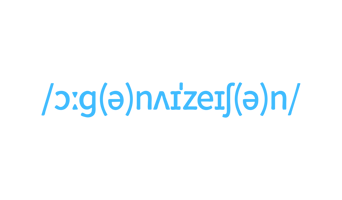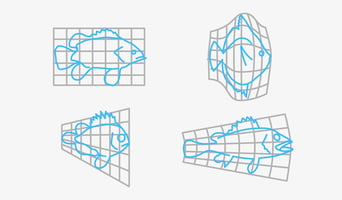Based on past organizational design work, we introduce a simple three step approach to define, assess, and start building strategic organizational capabilities.
Many organizational design projects involve defining and assessing the required organizational capabilities, e.g. to support a new strategic initiative.
Within the scope of the Organizational Structure Kit, in contrast, we use activities as the starting point for unit structure options. (For an overview of this approach, see the Kit Board canvas as well as the introduction to the Activities section).
This is because we generally find the activities approach simpler and more manageable as a basis for structural work in the narrow sense, whereas organizational capabilities can be a management project on their own, as they emerge from a combination of personal skills, organizational routines, and organizational resources. The organizational structure, and the processes supported by that structure, can be seen as a kind of blueprint or a backbone that is one of the factors supporting the development of capabilities.
How to define, assess, and build organizational capabilities as part of your organization design work: a three step approach
We suggest the following approach that distinguishes between three broad steps: defining capabilities, assessing capabilities, and building capabilities.
Step 1 - Define: Get to your list of organizational capabilities
In a first step, you should define with your clients or organizational stakeholders what you mean by the term “organizational capability”. This is important from a theoretical angle and also relevant in very specific project settings because it helps you to align language with your clients and stakeholders and ensures that everybody is talking about the same thing. This last aspect is especially important since “organizational capability” is a bit of an abstract concept that invites different understandings.
A simple definition of “organizational capability” is similar to one introduced by Clayton Christensen [1]: the set of factors that defines what an organization can or cannot do. The set of factors resulting in a capability falls into two broad categories – (organizational) resources and (organizational) processes & structures – with the two factors aligned along a strategic intent or goal.
The strategic intent or goal also helps to focus and prioritize the discussion. For example, almost every business organization will need to have the capability to “make payments” or the capability to do other basic operational tasks, requiring resources and processes, but many of those will not be “strategic” in the sense of differentiating the organization’s standing in the marketplace. While those non-strategic capabilities must not be forgotten, they are probably not a necessary topic for a strategic discussion with a company’s executive board as part of an organization design project. The organizational strategy can thus be translated into an initial list of capabilities - things an organization should be able to do - that are required to execute a strategic plan.
Resources that support capabilities can be people and their individual skills, as well as systems and machines, financial resources and assets, data, knowledge, or information and intellectual property, but could also be intangible elements, such as brands.
Processes & structures are the ways that an organization transforms resource inputs into outputs. This relates to the division of work as per the organizational structure and how collaboration works within that structure, which is how people work together to achieve results. Describing activities is one part of this, and how decisions are made is another.
For a specific project, we suggest selecting certain elements along the three categories of “strategy”, “resources”, and “processes”, and committing your project team and stakeholders to a definition that is both comprehensive and tailored to your specific goals and context. In some industries (and in some strategic contexts), some factors supporting new or underdeveloped capabilities will be more important than others.
We have developed a simple draft template to develop capability frameworks in Google Sheets format and have made it an additional resource within our Organizational Structure Kit. You can leverage the draft template to define your list of organizational capabilities.
Step 2 - Assess capabilities based on your organizational capability definition
The above definition along with a tailored specification of organizational capabilities provides you with a structure to run an assessment.
Pragmatically, we suggest starting with a long list of potential capabilities in the sense of “things the organization should be able to do” in order to deliver against its current strategy (this long list may itself be categorized, e.g. into innovation capabilities, digital capabilities, or financial management capabilities).
In a next step, check where those capabilities stand in terms of the elements of resources and processes that are required so the organization can do it (e.g. through interviews or a survey within the organization or with outside experts, or, for some aspects, there might be other data sources, e.g. on system maturity). For each element/factor, the description of the requirements should be followed by an assessment of where the organization stands, e.g. as compared to an ideal state.
The most basic structure of the model should be a matrix/sheet with capabilities on the vertical axis and the elements on the horizontal axis. See the above link to the Organizational Structure Kit for a basic example of how this could look.
And always, but especially if conducted in the context of an organizational design project, there should be a dedicated focus on organizational processes and structures (e.g. regarding the ways an organization collaborates across silos), in addition to the resources dimension, which often receives disproportionate attention in discussions of organizational capabilities.
Step 3 - Building organizational capabilities: think beyond skills
The ultimate purpose of defining and assessing is to identify areas for improvement. One important thing in capabilities work is to understand skills as just one dimension that might be required to develop organizational capabilities. Very often, organizational design and development (as in the ways in which resources are combined and lead to an output) are equally important, if not more important, for a given situation. Often system and technical capabilities can be a strong lever.
Developing the know-how to build organizational capabilities requires a joint understanding of crucial capabilities and a thorough assessment of your organization’s status quo. Action plans will typically touch on a number of elements along the resources and structure/processes dimensions.
Boost organizational effectiveness
with Management Kits
[1] Reference: Clayton M. Christensen and Michael Overdorf (2000), Meeting the Challenge of Disruptive Change, Harvard Business Review, March-April Issue.



